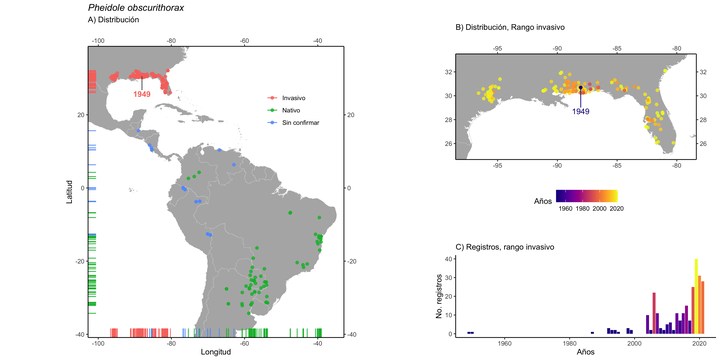Southamerican Invasive Ants

Biological invasions are events in which species, due to the disappearance of obstacles, move or extend their distribution rapidly to new areas where they can have competitive advantages due to the absence of natural enemies or superior competitors, and thus constitute abundant and/or dominant populations. Invasive alien species are a major threat to biodiversity, and are especially responsible for significant losses of goods and services, as well as of agricultural productive capacity.
Ants are one of the most diverse, conspicuous and dominant insects on the planet, being an essential component of ecosystem dynamics as predators, seed dispersers, and through their mutualistic relationships with other organisms. Of the ~14,000 known ant species, about 200 have successfully established outside their range, of which only 19 are considered invasive species by the IUCN. Five of these are included among the 100 worst invasive alien species in the world, of which three are native to southern South America: the Argentine ant (Linepithema humile), the fire ant (Solenopsis invicta) and the little fire ant (Wasmannia auropunctata).
The La Plata river basin, where the Paraná and Uruguay rivers, tributaries of the Río de la Plata, meet, is one of the regions of the world where most invasive ant species have originated, including L. humile, S. invicta and W. auropunctata. This region, where numerous species that have become invasive coexist, seems to have a combination of factors related to environmental conditions that would have favored the evolution of characteristics that favored their success as invaders, but it is also a region with a large number of trade routes.
Colaborators: Luis A. Calcaterra, M. Belén Fernández